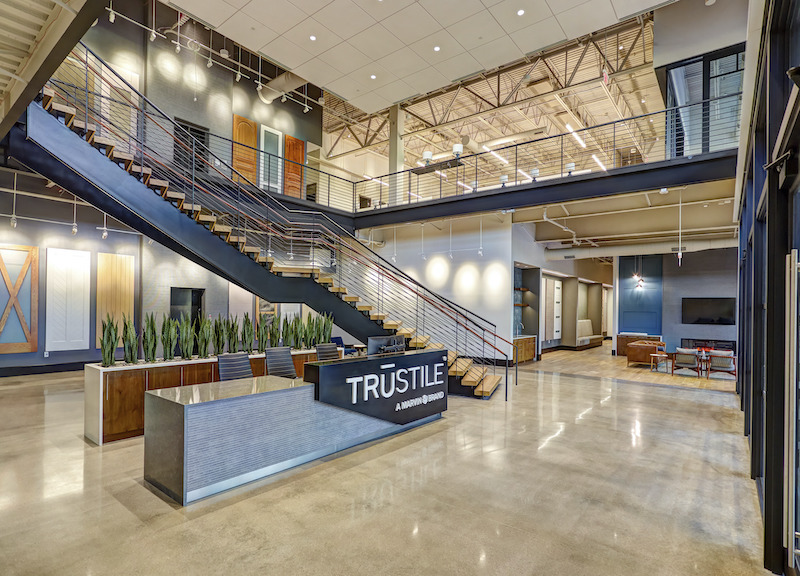Despite a coronavirus pandemic that has delayed or postponed projects across typologies and markets, the design firm Ware Malcomb has managed to buck that trend with design work for new buildings and spaces that serve some of the country’s hardest-hit sectors, like retail and offices, as well as some, like industrial, that have prospered during the health crisis.
Since last spring, Ware Malcomb’s completed projects have included:
•In December, the relocation of Key Food Stores Co-op’s corporate offices from Staten Island, N.Y., to 38,000 sf of Class A office space in Old Bridge, N.J. The new digs, on two floors, includes a reception area, conference rooms, a fitness center, and wellness room. The space also features an executive suite, and a test kitchen. Aside from providing interior architecture and design services, Ware Malcomb’s in-house branding studio designed environmental graphics into the workspace and amenity areas. Unity Construction Services was the project’s GC; CBRE was its broker and project manager.
•New office space for Airspace Technologies, the air transport shipping firm, located within the two-building, 235,000-sf Atlas at Carlsbad (Calif.) campus that Ware Malcomb helped to transform in 2017. Airspace Technologies is leasing 23,000 sf that are divided into three department “neighborhoods”: Design, Engineering, and Administrative. A centrally located reception, boardroom, and break area serves as a hub for employees. Ware Malcomb provided interior architecture and design services for this project, which was completed in October. The GC was Good & Roberts; the CM Hughes Marino; and the furniture supplier Cultura.
•Last summer, the 7,500-sf Vallejo First 5 Center opened as a learning and play space for children five years old or younger from low-income families. The space, inside the Vallejo (Calif.) Shopping Mall, has as its focal point a large indoor playground featuring a fantasy theme of bugs and the outdoors. Ware Malcomb provided the interior design architecture and design services, and Underwood Construction was the GC.
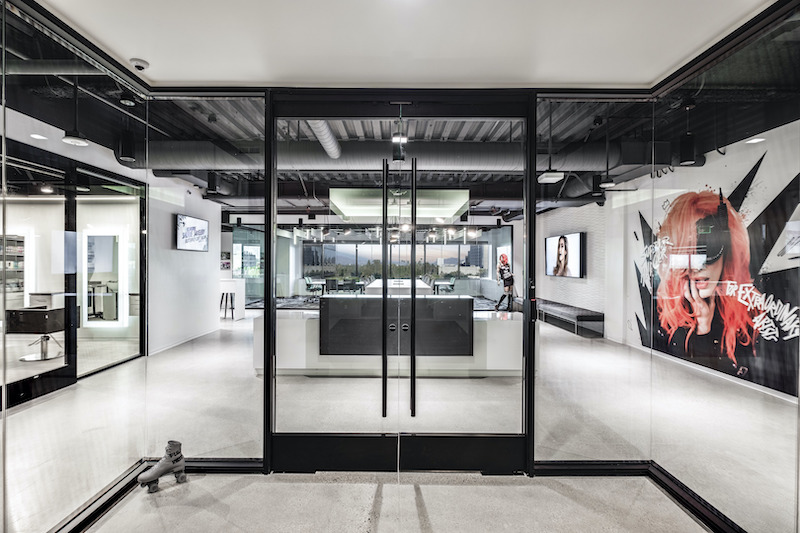
L'Oreal's Pulp Riot brand is now working out of new office space in Encino, Calif. Image: Haley Hill Photography
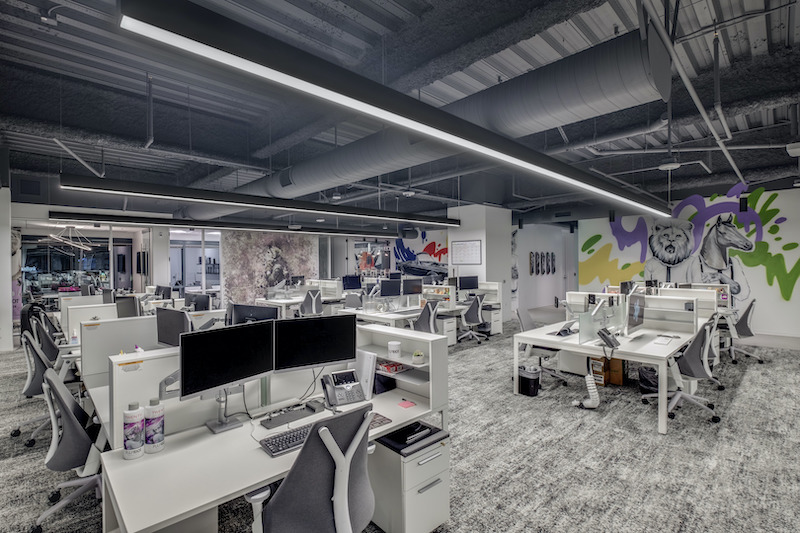
•New offices in Encino, Calif., that Ware Malcomb designed for L’Oreal’s Pulp Riot hair coloring product line. The 6,600-sf space encompasses a hair demo salon, conference rooms, open and flex offices, and a photo studio. It also serves as a training facility for stylists who come from around the country. The GC on this project, completed in July, was Pinnacle.
•Loloi Rugs’ newest facility, which opened in Atlanta last May, is a build-to-suit 646,380-sf building that incorporates a distribution center, warehouse, office space, and product showroom. Ware Malcomb designed 10,000 sf of interior office space and the 5,000-sf showroom. The offices, located on the periphery of the floorplate, have large windows and glass walls to maximize natural light exposure for the space. Ware Malcomb’s GC partner was Alston Construction.
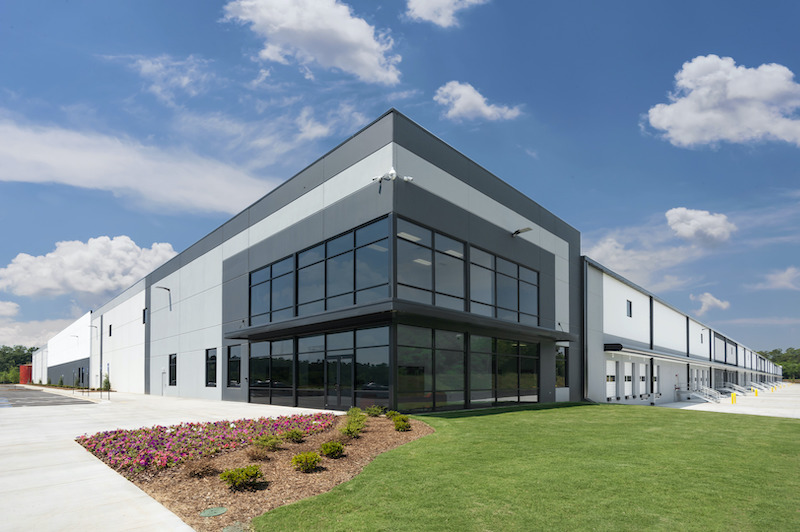
Ware Malcomb designed the interior space and showroom for Loloi Rugs' new warehouse in Atlanta. Image: Johnny McLendon Photography
BIO-MASS BOILER A FIRST FOR ITS MARKET
Yesterday, Ware Malcomb announced the completion of the new Denver headquarters for TruStile, an industry leader in interior doors whose parent company is Marvin Windows & Doors. The headquarters includes 50,000 sf of office space and 260,000 sf of manufacturing/production space with a large outdoor amenity deck.
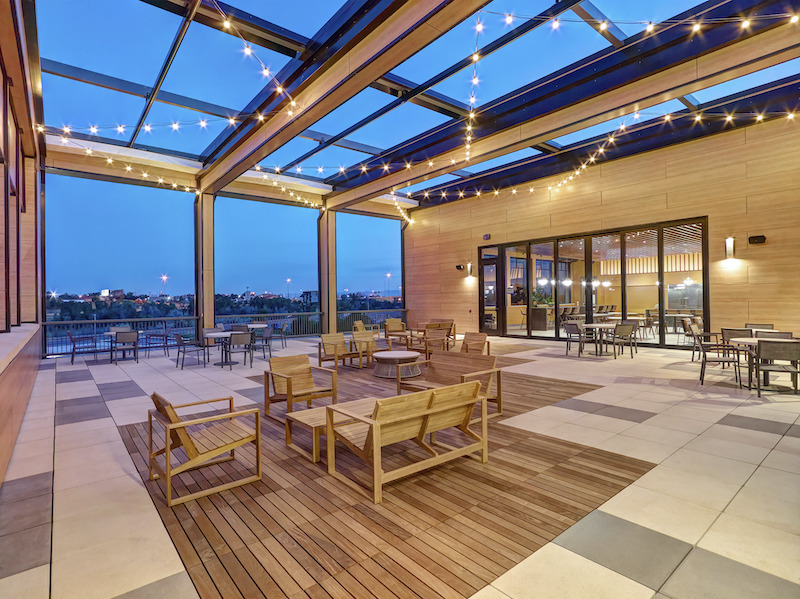
Bringing natural light into the building was an important design feature for TruStile's new headquarters. Image: Inside Out Studios
Ware Malcomb provided architecture, interior design, and engineering services for this project, which was built by Ryan Companies. The design team, at TruStile’s behest, ensured the layout of the open office and amenity areas were located near windows as much as possible. The production area is also visible from the building’s training room and various points in the office.
TruStile—which had been operating out of four buildings in Denver—has combined its operations into a single structure whose environmental features include a two-story mechanical building at its northern flank housing a bio-mass boiler that converts sawdust produced by the factory into energy for heating and cooling.
This site was constrained by its proximity to a 100-year floodplain. It required a development permit and a letter of map amendment and letter of map revision based on fill, known as a LOMR-F, whose issuance eliminates the federal flood insurance purchase requirement as a condition of federal or federally backed financing. This project also required a large underground detention system that was the first of its kind in Colorado.
ECOMMERCE IS DRIVING NEW PROJECTS
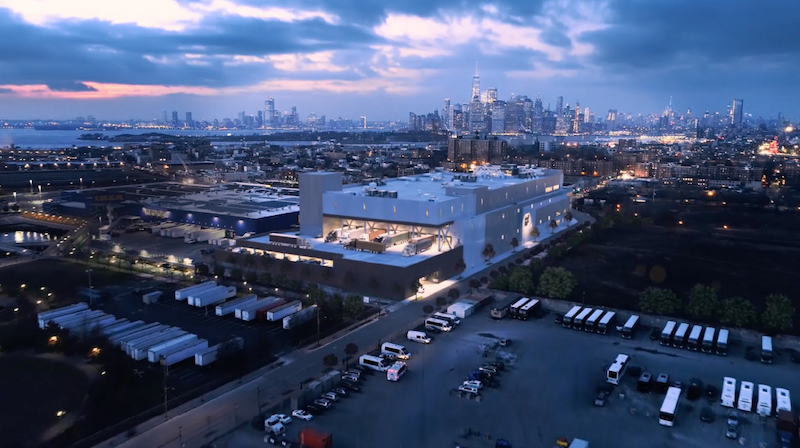
640 Columbia in Brooklyn, N.Y., will provide “last mile” distribution logistics for ecommerce. Image credit: Neoscape
Among the projects that Ware Malcomb currently has under construction is a multistory distribution center, known as 640 Columbia, which the firm developed in collaboration with DH Property Holdings and the GC firm Suffolk Construction.
Located on 4.5 acres in Brooklyn, N.Y., the 370,000-sf facility—which follows an industrial design prototype that Ware Malcomb came up with in 2017 for land-constrained sites—will provide so-called “last mile” logistics for the delivery of online purchases. The facility will include a warehouse, office space, two levels of truck docks, a mezzanine with parking, and dedicated elevator service on the third floor. An attached 77,853-sf parking structure will accommodate up to 184 vehicles for employees.
Since 2017, Ware Malcomb has designed approximately 20 million sf of industrial distribution projects in North America. The Brooklyn facility is scheduled for completion in the fourth quarter of 2021. Its building team includes SMBH Structural Engineering (SE), WB Engineers and Consultants (MEP/FP), and Bohler Engineering (CE).
Related Stories
Building Technology | Jun 18, 2024
Could ‘smart’ building facades heat and cool buildings?
A promising research project looks at the possibilities for thermoelectric systems to thermally condition buildings, writes Mahsa Farid Mohajer, Sustainable Building Analyst with Stantec.
University Buildings | Jun 18, 2024
UC Riverside’s new School of Medicine building supports team-based learning, showcases passive design strategies
The University of California, Riverside, School of Medicine has opened the 94,576-sf, five-floor Education Building II (EDII). Created by the design-build team of CO Architects and Hensel Phelps, the medical school’s new home supports team-based student learning, offers social spaces, and provides departmental offices for faculty and staff.
Healthcare Facilities | Jun 18, 2024
A healthcare simulation technology consultant can save time, money, and headaches
As the demand for skilled healthcare professionals continues to rise, healthcare simulation is playing an increasingly vital role in the skill development, compliance, and continuing education of the clinical workforce.
Mass Timber | Jun 17, 2024
British Columbia hospital features mass timber community hall
The Cowichan District Hospital Replacement Project in Duncan, British Columbia, features an expansive community hall featuring mass timber construction. The hall, designed to promote social interaction and connection to give patients, families, and staff a warm and welcoming environment, connects a Diagnostic and Treatment (“D&T”) Block and Inpatient Tower.
Concrete Technology | Jun 17, 2024
MIT researchers are working on a way to use concrete as an electric battery
Researchers at MIT have developed a concrete mixture that can store electrical energy. The researchers say the mixture of water, cement, and carbon black could be used for building foundations and street paving.
Codes and Standards | Jun 17, 2024
Federal government releases national definition of a zero emissions building
The U.S. Department of Energy has released a new national definition of a zero emissions building. The definition is intended to provide industry guidance to support new and existing commercial and residential buildings to move towards zero emissions across the entire building sector, DOE says.
Multifamily Housing | Jun 14, 2024
AEC inspections are the key to financially viable office to residential adaptive reuse projects
About a year ago our industry was abuzz with an idea that seemed like a one-shot miracle cure for both the shockingly high rate of office vacancies and the worsening housing shortage. The seemingly simple idea of converting empty office buildings to multifamily residential seemed like an easy and elegant solution. However, in the intervening months we’ve seen only a handful of these conversions, despite near universal enthusiasm for the concept.
Healthcare Facilities | Jun 13, 2024
Top 10 trends in the hospital facilities market
BD+C evaluated more than a dozen of the nation's most prominent hospital construction projects to identify trends that are driving hospital design and construction in the $67 billion healthcare sector. Here’s what we found.
Adaptive Reuse | Jun 13, 2024
4 ways to transform old buildings into modern assets
As cities grow, their office inventories remain largely stagnant. Yet despite changes to the market—including the impact of hybrid work—opportunities still exist. Enter: “Midlife Metamorphosis.”
Affordable Housing | Jun 12, 2024
Studio Libeskind designs 190 affordable housing apartments for seniors
In Brooklyn, New York, the recently opened Atrium at Sumner offers 132,418 sf of affordable housing for seniors. The $132 million project includes 190 apartments—132 of them available to senior households earning below or at 50% of the area median income and 57 units available to formerly homeless seniors.


